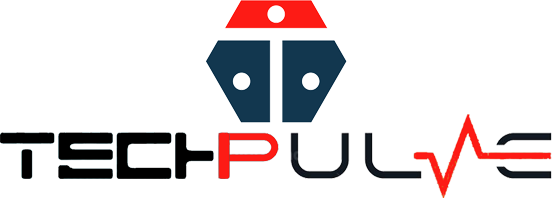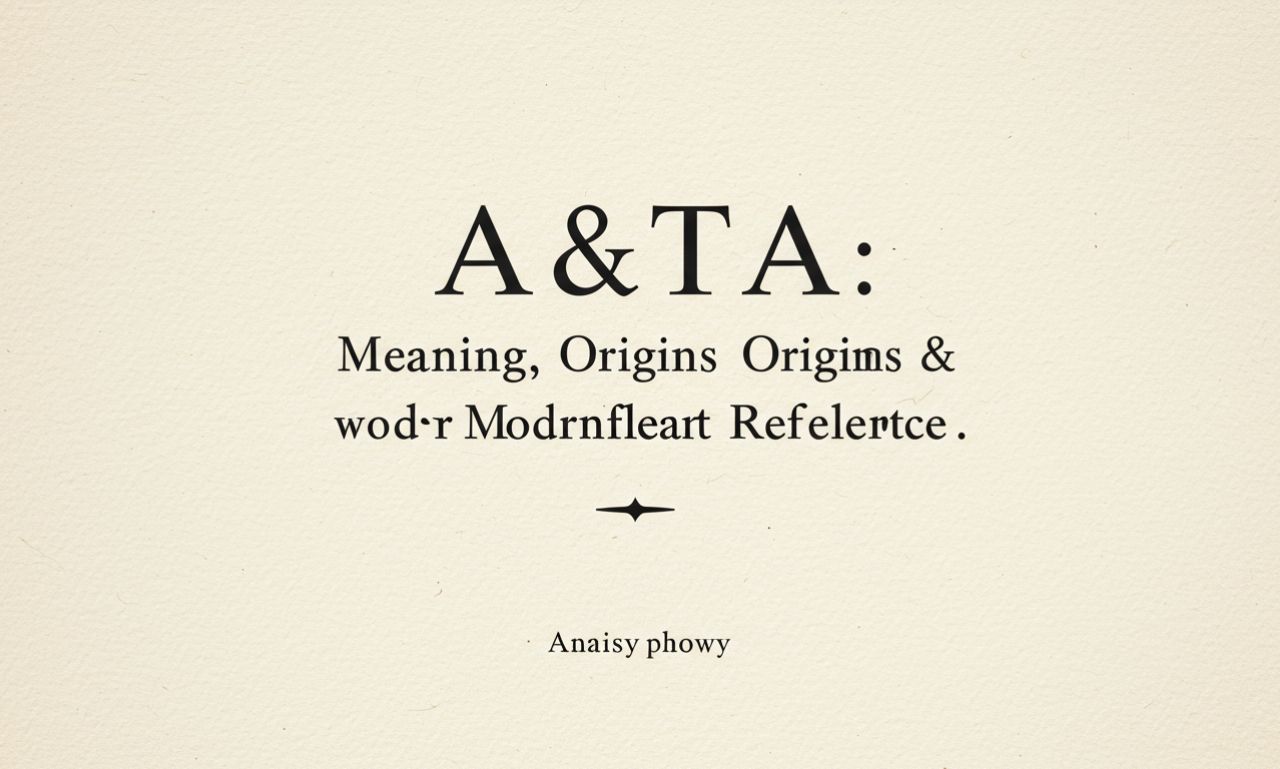A&TA is an abbreviation or acronym that appears in various contexts. One known meaning is Assembly and Test Area, especially in manufacturing or electronics production.
However, recent sources use A&TA more broadly, as a conceptual or strategic framework. In some discussions, A&TA is interpreted as Awareness & Transformative Action or Analysis & Targeted Action—phrases used in organizational strategy or tech & business commentary.
So, A&TA does not have just one fixed definition; its meaning tends to depend heavily on domain—manufacturing, organizational strategy, consulting, or even cultural/educational settings.
A&TA: Historical Origins & Evolution
A&TA in its manufacturing sense (“Assembly & Test Area”) has long roots: produced goods—especially electronics—require defined spaces where components are assembled and then tested before release. This usage is specialized and technical.
More recent uses—where A&TA refers to frameworks like Awareness & Transformative Action or Analysis & Targeted Action—seem to emerge in business/strategy writing. These usages reflect the trend of making organizational practices more adaptive, emphasizing both understanding (analysis or awareness) and doing (action / transformation). Articles in leadership or innovation blogs increasingly adopt A&TA-type patterns.
A&TA: Key Components & Dimensions
When someone refers to A&TA (in its more modern generalized usage), the core components often include:
-
Awareness / Analysis: Gathering data, perceiving context, understanding environment, identifying challenges or opportunities.
-
Action / Transformation / Targeting: Using insights to make change—implementing strategies, shaping behavior, improving systems.
These two halves are interdependent: without awareness/analysis, action may be misguided; without action, awareness is inert.
Other dimensions often discussed:
-
Adaptability: A&TA frameworks often emphasize being adaptive—able to shift strategy as conditions change.
-
Accountability: Ensuring that the “action” side is measurable, with feedback and iteration.
-
Ethics and Values: Modern A&TA discussions sometimes embed values—sustainability, equity, social responsibility—into what “transformative action” should target.
A&TA: Applications in Business & Tech in 2025
Here are some ways A&TA is being used in business, tech, culture, or other fields:
Business Strategy & Leadership
-
Firms adopt A&TA-style models for change management: first assess internal culture, market shifts, competitor moves (analysis/awareness), then implement change programs, retool workflows, reassign resources (action/transformation).
-
Strategy consultants may formalize A&TA as part of their frameworks: “we will bring you through A&TA phases” in workshops.
Technology & Innovation
-
Product development uses A&TA: analysis of user needs, feedback, market data, then targeted action in feature roll-outs or design pivots. Agile methodologies are similar in spirit.
-
In emerging tech (AI, sustainability tech), teams try to use A&TA to ensure ethical and responsive innovation: e.g. awareness of environmental impact + action to reduce carbon footprints.
Social / Cultural Contexts
-
NGO / social enterprises use A&TA or related frameworks to balance understanding of social issues (research, data, stakeholder voices) with transformative programs (advocacy, community programs, policy initiatives).
-
Education / leadership training use A&TA to teach critical thinking + action orientation: not only knowing, but doing.
A&TA: Benefits & Strengths
Using an A&TA framework can bring a number of advantages:
-
Clarity & Focus
Having two phases (awareness/analysis + action) helps organizations avoid hasty reactions. It encourages deliberate thinking, which improves decision quality. -
Better Responsiveness to Change
Because awareness includes scanning environment, adapting to new data, the action part can be more agile and relevant. -
Measurable Impact
When action is grounded in analysis, metrics can be set (KPIs, feedback loops), so results are better tracked. -
Alignment Across Stakeholders
Shared A&TA model helps different teams or parts of an organization understand what’s expected: first understand, then act. -
Ethical or Sustainable Change
If awareness includes consideration of values, ethics, communities, then action tends to be more grounded, less likely to produce unintended harm.
A&TA: Challenges & Caveats
Not everything about A&TA frameworks is problem-free. Some of the known or likely challenges include:
-
Analysis Paralysis: Too much time spent in the awareness/analysis stage can delay needed action. Some leaders may get stuck in data gathering without moving forward.
-
Poor Feedback or Mis-Analysis: If awareness is based on flawed or incomplete data, action based on it may be wrong. Mistakes in data, bias, or context can misdirect strategy.
-
Implementation Gaps: Even with good awareness, executing transformation is hard. Requires resources, alignment, buy-in, change management.
-
Resistance & Inertia: Organizational culture often resists change; the “action” side might encounter obstacles, pushback; sometimes analysis reveals uncomfortable truths, which are ignored.
-
Overextension: Trying to do too many transformative actions at once can dilute resources or lead to spreading effort too thin.
A&TA: Real-World Examples
Although “A&TA” as a specific term isn’t always formally adopted, there are analogous real-world cases illustrating its logic:
-
A tech startup that does user research (awareness) then iterates product features (action) to improve retention and reduce churn.
-
A city / municipality surveying residents about environmental concerns (air quality, green spaces) and then implementing localized policies (planting trees, regulating traffic) to address those concerns.
-
Companies doing ESG (Environmental, Social, Governance) audits or assessments, then implementing transformation programs to reduce carbon emissions or improve labor practices.
-
Educational institutions introducing feedback systems (student surveys, peer review) and then updating curricula, methods, or staff training in response.
A&TA: How to Implement Effectively
To get the most out of an A&-TA-oriented framework, here are some guidelines:
-
Set Clear Objectives in both analysis and action phases. Know what you want to learn & what you want to change.
-
Collect Diverse & Quality Data for awareness/analysis: internal stakeholders, customers, market, competitors, environmental and regulatory trends.
-
Prioritize: Not all findings require action; pick what is high-impact, feasible, aligned with resources/values.
-
Plan Incremental Transformation: small wins build momentum and credibility; avoid trying too much at once.
-
Monitor & Iterate: build feedback loops. Are actions working as expected? If not, adjust.
-
Ensure Stakeholder Engagement: people affected should be part of awareness and action phases; it helps with buy-in.
-
Embed Ethics, Values, Sustainability: include moral, environmental, social dimensions in both awareness and action to avoid negative impacts.
A&TA: Where It Is Headed & Future Trends
Based on recent thought leadership and market developments, here are likely trajectories for A&-TA frameworks and usage:
-
Integration with AI / Data-Driven Decision Making: awareness/analysis increasingly powered by machine learning, predictive analytics. Action phases may leverage automation.
-
Sustainability & Social Impact Embedded in Strategy: awareness now includes climate change, equity, inclusion. Action expected to respond accordingly.
-
Hybrid & Remote Organizations: awareness has to cover distributed teams, global markets; action must adjust for remote work, cultural diversity.
-
Flexible Frameworks: A&-TA won’t be rigid; sectors will adapt it (for example in health, education, tech). Tools, templates, models for A&TA will be more widespread.
-
Accountability & Transparency: public pressure and regulatory demand may force organizations using frameworks like A&TA to report results, open their process (e.g. what analysis showed, what action was taken).
A&TA: Practical Tips & Tools
Below are concrete tools or methods that support adopting A&-TA mindset:
-
Use tools like customer or stakeholder surveys, market research platforms, A/B testing, analytics dashboards for the awareness side.
-
Use project management software (e.g., Jira, Trello, Monday.com), change management techniques, cross-functional teams for the action side.
-
Set up quarterly reviews or retrospectives: what was discovered, what changed, what next.
-
Visualization tools: dashboards tying awareness findings to outcomes of action (graphs, KPIs).
-
Workshops / retreats / strategy sessions to align leadership on both parts.
A&TA: Critiques & Common Misunderstandings
Some misunderstandings to guard against when using or talking about A&-TA:
-
Thinking awareness alone is enough. Without action, nothing changes.
-
Assuming action can be taken without proper awareness: has risk of mis-targeted efforts.
-
Believing that A&TA is a silver bullet: it requires time, resources, culture, discipline.
-
Mistaking buzzword usage: some organizations may use “A&-TA” casually without deep commitment; the real power is in consistent practice.
Conclusion
A&TA stands as a useful, increasingly relevant framework across business, technology, culture, and strategy. Its core duality—awareness/analysis followed by action/transformation—offers a structured way to respond to complexity in the modern world. When implemented carefully, with clarity, ethics, feedback, and adaptability, A&TA can support meaningful change. But it also faces challenges of analysis paralysis, resource constraints, and resistance.
For organizations, leaders, or anyone wanting to drive change, embracing both parts of A&-TA—not just knowing, but doing—can be the difference between growth and stagnation.

